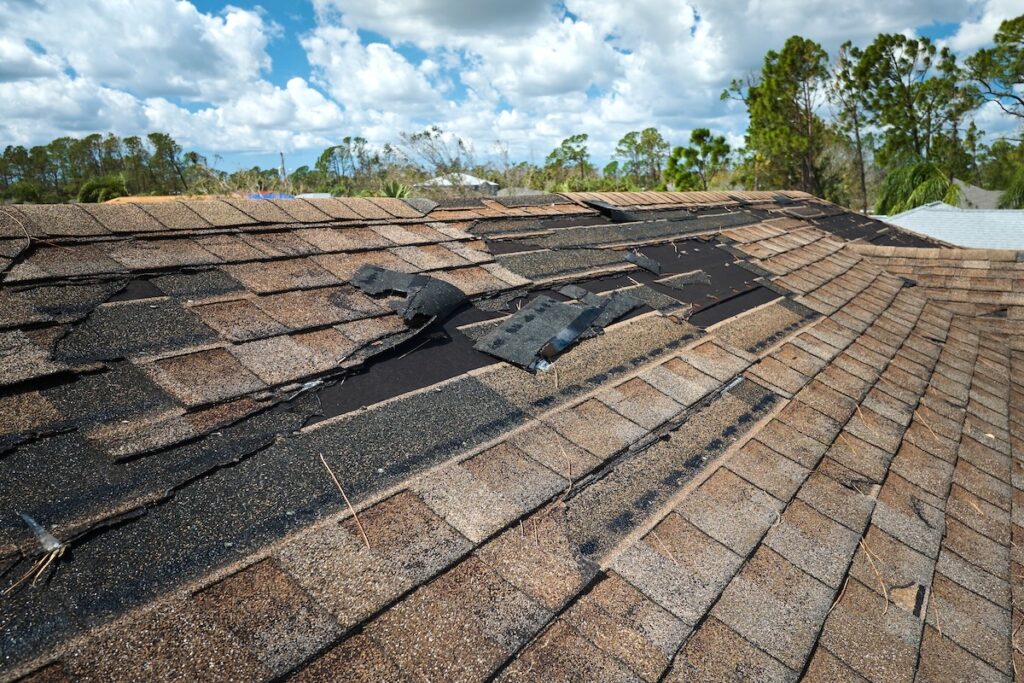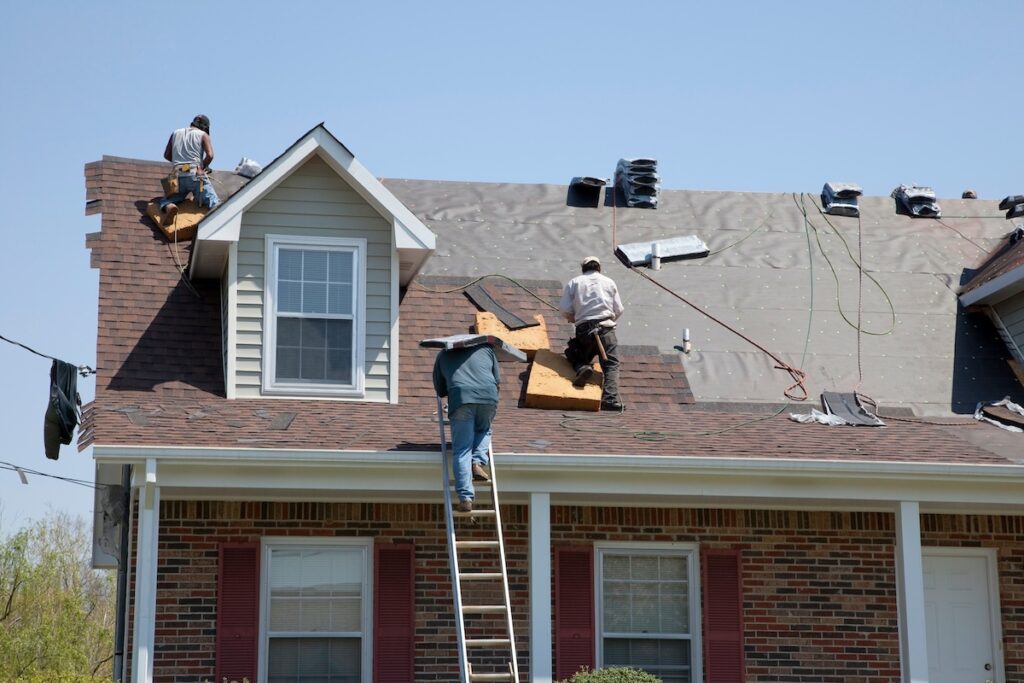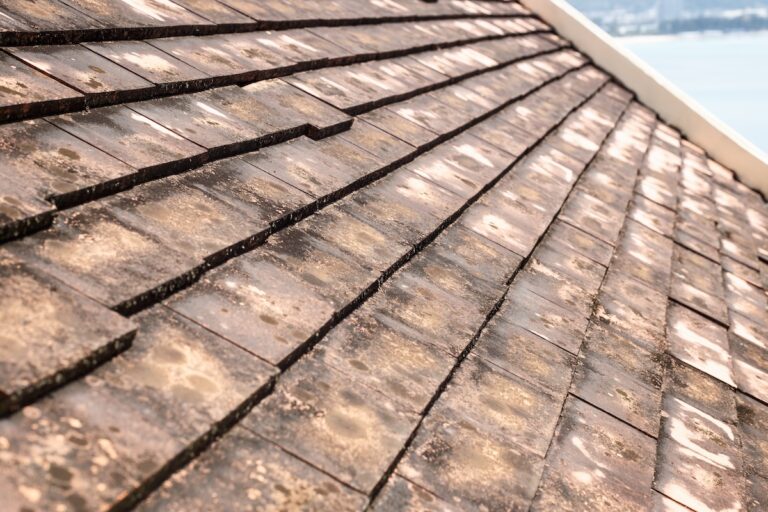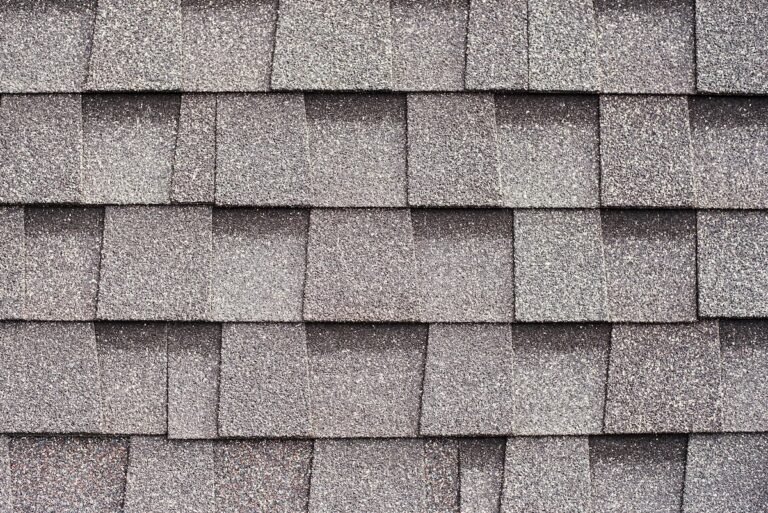After a major storm rolls through, it’s easy to feel overwhelmed. That’s why every homeowner should have a roof storm damage checklist ready to go. Wind, hail, and heavy rain can silently damage your roof, often without any immediate signs inside your home.
In this guide, we’ll walk you through the practical steps to take after a storm, including:
- Inspecting your property safely and thoroughly
- Documenting damage for a smooth insurance claim
- Scheduling a professional inspection before problems spread
Let’s walk through the key steps to protect your home and your wallet after a storm.
1. 🔍 Stay Safe and Look for Visible Clues

Your first priority after any severe weather is personal safety. Resist the urge to get up on the roof yourself. The surface may be slippery or unstable, especially after heavy rain, or wind damage.
- Scan from the ground: Use binoculars to look for missing shingles, dented flashing, debris piles, or obvious holes in the roof.
- Check the perimeter: Look for broken gutters, siding damage, or fallen tree limbs.
- Inspect inside: Head up to the attic and look for water stains, leaks, or the smell of damp insulation.
These clues give you a good idea of how serious the damage might be, even before a pro gets on the roof.
2. 🪣 Prevent Further Interior Damage
Even minor roof issues can lead to major interior problems if water is allowed to seep in.
- Use buckets or containers: Catch active leaks inside to prevent flooring and drywall damage.
- Move valuables: Get furniture, electronics, and keepsakes away from any problem areas.
- Apply a tarp if safe: If you can safely cover the damaged section from a ladder, a weatherproof tarp can temporarily prevent further leaks.
Quick action can keep a minor roof issue from turning into a full structural repair.
3. 📸 Document the Damage Thoroughly
To support your insurance claim and ensure a smooth repair process, take the time to gather evidence.
- Take photos and videos: Capture all visible damage from multiple angles. Don’t forget close-ups of missing shingles, bent gutters, or water spots indoors.
- Write down key details: Include the date and time of the storm, when you noticed damage, and any immediate actions you took.
- Save receipts: If you spent money on emergency supplies or services, keep records to submit for reimbursement.
A clear record helps your insurance adjuster understand the full picture.
4. 📞 Contact Your Insurance Company
The sooner you file your claim, the sooner your roof can be repaired—so don’t delay.
- Report the damage: Provide your insurance company with documentation and request a formal inspection.
- Understand your policy: Some policies cover full roof replacement, while others only cover repairs or partial reimbursement.
- Ask about next steps: Your provider may recommend preferred roofing contractors or allow you to choose your own.
An open line of communication helps you avoid delays and confusion later in the process.
5. ⭐️ Get a Professional Roof Inspection
While your insurance adjuster will evaluate the damage, it’s essential to get a second opinion from a qualified roofing contractor. Many types of storm damage aren’t visible from the ground or may be missed by non-specialists.
- Look for local experience: Choose a roofing company that understands Pennsylvania’s storm patterns and local building codes.
- Request a full roof evaluation: A good contractor will assess the entire roofing system, including the roof deck, flashing, roof penetrations, and attic.
- Get a written estimate: Ask for a clear breakdown of repair or replacement costs, including materials, labor, and timelines.
A professional inspection helps you avoid underestimating the scope of the damage.

6. ✅ Use This Roof Storm Damage Checklist
This checklist can guide you step-by-step after any storm event. Keep it on hand so you’re always prepared.
- Check for safety hazards: Watch for downed power lines, unstable structures, or debris before walking around your property.
- Look for visible roof damage: Scan for lifted shingles, missing flashing, bent gutters, or fallen branches.
- Inspect the attic and ceilings: Water stains, musty smells, hail holes, and damp insulation are key red flags.
- Take photos and notes: Document damage thoroughly for insurance purposes.
- Report damage to your insurance company: Get your claim started and follow their process closely.
- Call a trusted roofing contractor: Get a professional opinion on what’s needed and what your options are.
- Decide on repairs or replacement: Work with your contractor to restore your roof—and peace of mind.
With the right process, you’ll save time, money, and frustration.
7. ❗️ Know the Most Common Types of Storm Damage
Not all roof damage is obvious right away. Here are the most common post-storm problems homeowners face:
Missing or Damaged Shingles
High winds and hail can tear shingles off your roof or cause them to crack and curl.
- Why it matters: Gaps in shingle coverage expose the underlayment and roof deck to moisture damage.
- What to watch for: Shingle granules in gutters, visible bald spots, or loose material in the yard.
Roof Penetration Issues
Storms can shift or damage flashing around chimneys, vents, and skylights.
- Why it matters: Even a small breach can let in water and lead to mold or rot.
- What to watch for: Dented flashing, cracked seals, or rust near penetrations.
Structural or Roof Deck Damage
Fallen branches or flying debris can puncture the roof and compromise the structure beneath.
- Why it matters: Damage to the roof deck may not be visible from the outside but can lead to sagging or collapse.
- What to watch for: Soft spots, sagging areas, or uneven roof lines.
👉 Bonus Tip: Create a Roof Maintenance Checklist
While you can’t control the weather, you can take steps to protect your home before the next storm hits.
- Schedule bi-annual inspections: Spring and fall are the best times to evaluate your roof’s condition.
- Clean gutters and downspouts: Clogged drainage can lead to ponding and ice dams.
- Trim overhanging trees: This reduces the risk of impact damage from falling limbs.
- Seal or replace worn flashing: Especially around roof penetrations like vents and chimneys.
Proactive maintenance from a renowned roofing company such as G Cannon helps extend your roof’s lifespan and reduces storm-related stress.

⛈️ G. Cannon Is Here When Storms Hit
When disaster strikes, following a roof storm damage checklist can help you take control, protect your home, and avoid costly repairs. At G. Cannon, we’ve helped countless homeowners across Pennsylvania with roofing storm recovery with confidence.
From fast inspections to expert repairs and full roof replacements, our team is here to guide you every step of the way. Contact G. Cannon today for a free estimate and let us help you recover quickly and safely after any storm.






